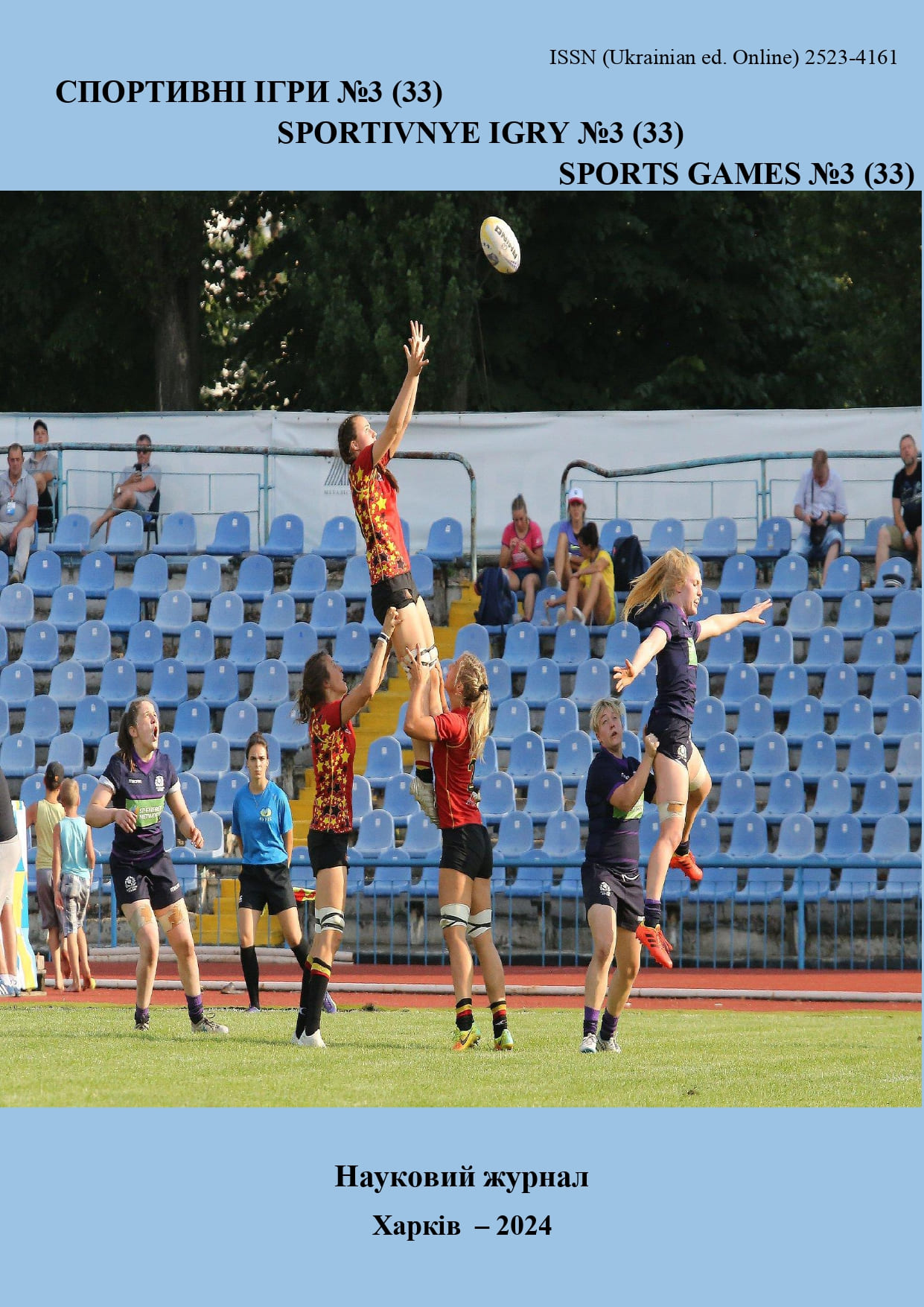The influence of an experimental physical training program on 100 m running speed indicators of educators of table tennis groups of a higher education institution. Dynamics and forecasting
DOI:
https://doi.org/10.15391/si.2024-3.02Keywords:
Model building, RS analysis, Hurst method, speed development, student, fractal analysisAbstract
The problem of improving the process of physical education of students has been the subject of specialists' attention for many years. Analysis of literary sources shows that the level of physical fitness, mental and moral strength of the main mass of applicant’s education remains quite low. This requires finding new ways to improve physical, mental and moral condition of student youth. Purpose: experimental check the effect of specially designed classes included in the physical education program training of students of sports oriented groups in table tennis of the institution of higher education on the indicator of running speed for 100 m. Material: used in the experiment participation of 106 first-year students of different genders (53 – control group and 53 – experimental). The R/S method was proposed for processing experimental data. Informed consent to participate in this experiment was obtained from all participants. Results: at the end of the experiment (May), the results of the students of the experimental group qualitatively differed from the results of the students of the control group groups The results of the pedagogical experiment indicate the need for inclusion of the proposed classes in the educational program for physical education of students of groups with a sports orientation, in particular (sectional classes) table tennis. The experimental program included classes with running at the maximum pace at short distances from 15 to 30 m, at a distance of 60 and 100 m, running at maximum pace cross step in different directions. Relays with running were also used, moving in different ways, mobile games and sports team games. Organization education seekers was carried out by the frontal method and the method of circular training. When using circular training, accelerations for 100 m were used speed up to 65-70% of the maximum, which alternated with running for a distance of 50 m at a slow pace The training program also included classes with cross-country elements training and elements of basic aerobics, step aerobics, dance aerobics, which accounted for up to 25% of the time. The pedagogical experiment was conducted during the academic year with from October 2020 to June 2021. Conclusions: this experiment proved that that the inclusion of specially developed table tennis sections in the curriculum classes, made it possible to improve the indicators of education seekers in running a distance of 100 m. The method of exponential smoothing made it possible to predict the results on future. One of the advantages of the calculation method proposed in the article is that that fractal analysis allows to reveal stochastic (random) time series. In such, there is no long-term statistical dependence in the time series.
References
Гринько, В.М., Єфремова, А.Я., & Куделко, В.Е. (2020). Дослідження рівня фізичної підготовленості студентів І-ІІ курсів українського державного університету залізничного транспорту. Спортивні ігри, 4 (18), 14-21. http://doi.org/10.15391/si.2020-4.02
Чайковська, І.І. (2014). Економіко-математичне моделювання в управлінні інтелектуальним капіталом підприємства [Текст монограф.]. Хмельницький : Хмельницький університет управління та права.
Anis, A.A., & Lloyd, E.H. (1976). The expected value of the adjusted rescaled Hurst range of independent normal summands. Biometrica, 63, 283-298.
Clegg, R.G. (2005). A practical guide to measuring the hurst parameter. Computing science technical report, CS–TR–916, 125-138.
Grinko, V., & Kudelko, V. (2022). Reactions of the Body, Which Occur Only During Sports. Research & Investigations in Sports Medicine, 8(5), 770-771. http://doi.org/10.31031/RISM.2022.08.000698
Grinko, V., & Sapehina, I. (2022). Analysis of Students’ Education on the Principle of Consent with Nature on the Example of Physical Education. Biomed J Sci & Tech Res, 46(2), 37297-37300. http://doi.org/10.26717/BJSTR.2022.46.007331
Grinko, V., Shepelenko, T., Kudelko, V., Shaposhnyk, A., Slastina, O., Bodrenkova, I., Moshenska, T., Luchko, O., & Dovzhenko, S. (2023). Construction of a 15-second dynamic running model for groups with different training programs. Its dynamicsand prediction. FOURRAGES Journal, 256, Issue:11, France https://doi.org/10.59671/ubMzo
Grynko, V. (2015). Students' attitude to physical education, a healthy lifestyle, and their self-assessment of the level of physical fitness. Slobozhansky science and sports bulletin, 1(45), 55-59.













